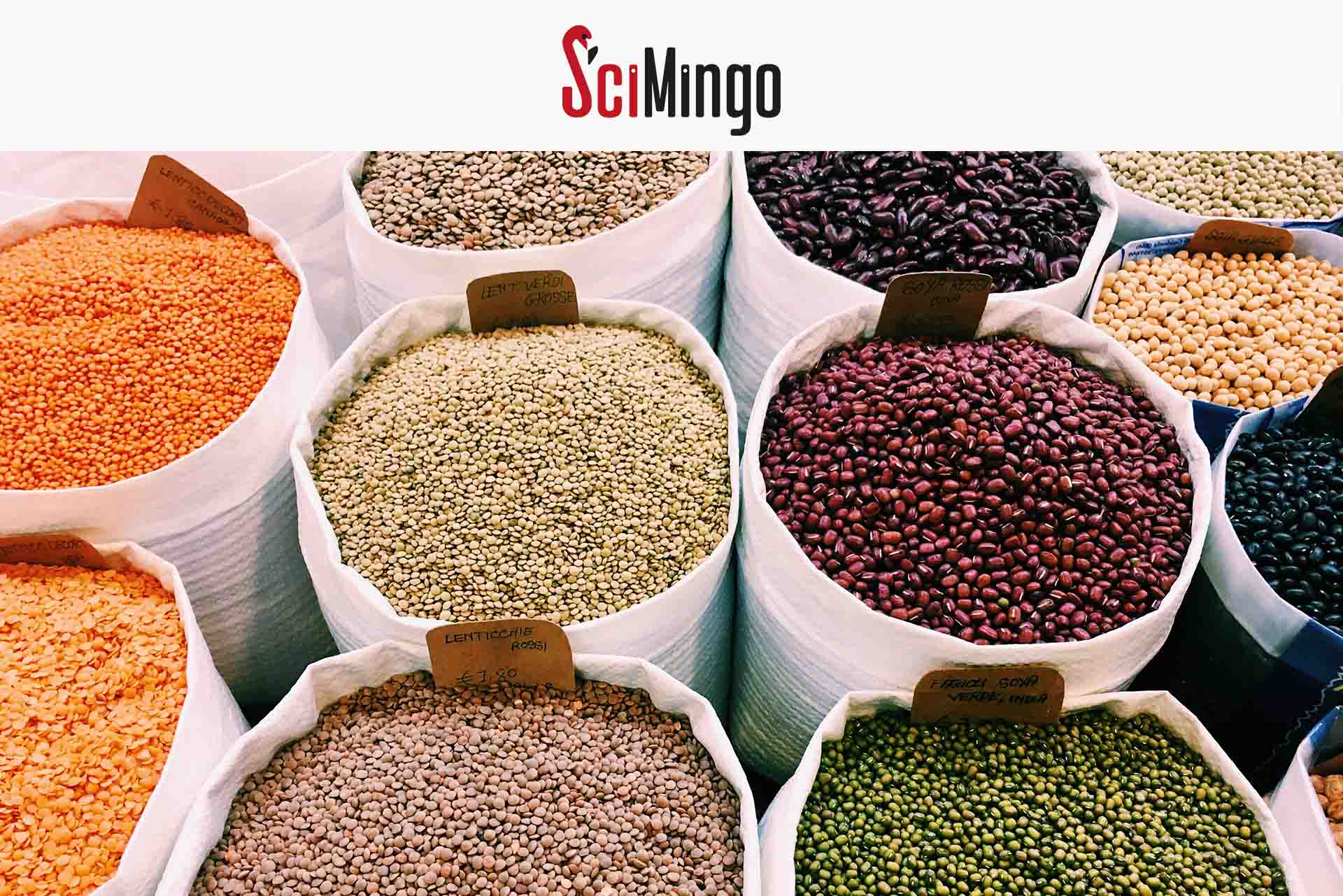Nutrient bombs with a remarkable build
Pulses are great sources of plant-based protein, fiber, vitamins, and minerals. But there’s more: inside pulses, starch is encapsulated within cells, and inside these cells, starch granules are embedded in a thick protein network. Pulse cells remain intact upon cooking, chewing, and even digestion. During digestion, the cell wall and protein network form a labyrinth through which digestive enzymes have to move to reach the starch and break it down. As a result of this structure, the digestion of starch in cooked pulses is slowed down. This slower digestion causes sugar to be released gradually into the blood, without steep peaks in your blood sugar level, and makes you feel satiated longer. This means cooked pulses are a great way to feel full for longer and fight off snacking tendencies. So why are only 20% of Belgians consuming pulses weekly?
For a long time, pulses were regarded as old-fashioned or not tasty. This is now changing. More and more pulse-based foods can be found in supermarkets – falafel or lentil pasta, for example. The use of pulses as ingredients in well-accepted foods can make it easier for you and I to eat more pulses without drastically changing our habits. However, these products are usually made from raw-milled pulses, in which the typical cellular structure is lost. While the composition of these products might be similar to cooked pulses, their starch can be digested faster. That means your blood sugar could rise higher, and you might be more likely to start snacking in the evening.

So… 1 kcal ≠ 1 kcal?
Indeed, strange as it might seem, 1 kilocalorie really isn’t the same as another. This is because the caloric content of a food only reflects its overall composition – the presence of carbohydrates (such as starch and sugars), proteins, lipids, or alcohol. But it’s not only the composition of a portion that matters: the way in which the food is prepared will also affect how nutrients are released in our bodies during digestion.
As a result, 100 kcal of hummus made from boiled chickpeas will be digested differently from 100 kcal falafel made from raw-milled chickpeas. Even though they are made from the same pulses, their microscopic structure and behavior upon consumption is completely different. Additionally, in boiled chickpeas, some of the starch encapsulated inside cells will remain undigested and reach the colon. There, it is fermented by gut microorganisms, which can be beneficial for your gut health.
“It’s not only the composition of a portion that matters: the way in which the food is prepared will also affect how nutrients are released in our bodies during digestion.” – Dorine Duijsens
What is the healthier option, then? That depends on who is doing the eating. Top sprinters may need a quick supply of energy, for example, while people who spend much of their time behind a desk (like me) benefit more from a gradual energy supply and a longer feeling of satiety. Of course, additional ingredients such as oil and salt will also determine how healthy the food is overall.
Pulse pasta and test tube digestion
How can we combine the beneficial composition and structure of pulses and use both properties to our advantage? My research at KU Leuven focuses on answering that question. In the lab, we’ve developed a cellular powder from cooked lentils. This powder contains encapsulated, slowly digestible starch, and can be used to produce all kinds of foods. For example, we produced a pulse pasta by replacing part of the normal flour with this cellular powder. Test tube digestions showed that the starch in this cellular pasta was about 30% less digestible. This means its energy will be released slower and more undigested starch could reach your colon as dietary fiber.

Food of tomorrow… and today
So will we all be eating cellular pulse pasta soon? If I have anything to do with it: yes! But for people to be willing to consume these foods, they need to be tasty and attractive as well as healthy. Unfortunately, the texture of the cellular pasta we made in the lab was not yet ‘al dente’ enough for our tastes. We’ll need to do further research into the application of cellular powders first, since they are very different from regular flours.
Curious about food? Read this article about how changing diets gave rise to the world’s deadliest diseases!
So for now: ‘stew before you chew’! In this way, due to the slow digestion of starch in intact cells, you can benefit from a gradual energy supply and a longer feeling of satiety. You could add (canned) cooked pulses to your dishes or make your own hummus from canned chickpeas. Or you could try to adapt recipes so that you cook pulses before mashing them up, to keep the cells intact. By making falafel from cooked chickpeas instead of raw ones, for example. Because now you know that the way in which you prepare pulses will determine their effect on your body!


